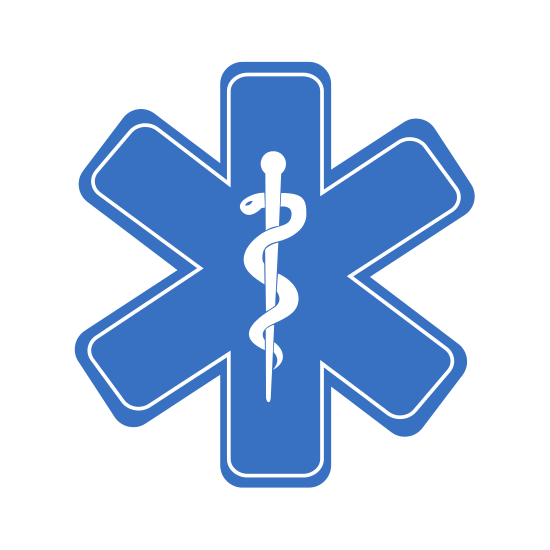The healthcare industry is exponentially growing, and so is the demand for professions. The U.S. Bureau of Labor Statistics reveals that healthcare jobs are expected to rise by 2% with some 974,000 new openings. Experts attribute this continuous growth to the expanded health insurance coverage and the rising need of an increasing population of baby boomers. Large healthcare facilities, health systems, hospitals, and private professionals seek to improve their services through eligible support and clinical staff.

Employment for people with medical training is expected to rise significantly. It is considered good news for degree holders or highly trained professionals looking to carve out their careers in the competitive industry. Most high-paying professions in healthcare require education, training, or both. It allows people of varied professional and technological qualifications to apply for clinical and non-clinical health care roles. When interested in an online program, aspiring healthcare professionals must choose an online school that meets their state’s specific licensure requirements.
The salary rates for healthcare professionals vary according to degree, licensure, and area of study. Employment and salaries for health care workers vary from $20,000 to $102,950 annually.
You might be interested:
- Highest Paying Jobs for College Graduates
- The Country’s Highest Paying Jobs
- 40 Online Degrees Most Likely to Get You a Job in 2020
- Healthcare Navigational Guide
We name the top 20 highest paying jobs in healthcare for 2020. Use these page jumps to navigate these sections with ease!

Anesthesiologist
Surgeon
Psychiatrist
Cardiovascular Perfusionist
Pharmacist
Advanced Practice Registered Nurse (APRN)
Physician Assistant
Medical Dosimetrist
Nurse Midwife
Medical and Health Services Manager
Biomedical Engineer
Physical Therapist
Occupational Therapist
Radiation Therapist
Genetic Counselor
Speech-Language Pathologist
Nuclear Medicine Technologist
Dental Hygienist
Registered Nurse (R.N.)
Chiropractor

Anesthesiologist
Average Annual Income of an Anesthesiologist — $256,321 to $369,367

Overview
Anesthesiologists are regarded as anesthesia experts, and they collaborate with other medical staff teams that are responsible for checking patients’ vital signs during surgery or after various treatments. Anesthesiologists actively engage in about 90% of the over 40 million procedures that are performed annually in the United States.
Anesthesiologists need to complete their studies within four years of the undergraduate program in pre-medicine and four-year medical school courses. Graduates then proceed to a two- to three-year residency program to obtain the American Board of Anesthesiology certification.
Average annual income of an Anesthesiologist – $256,321 to $369,367
Expected growth over the next decade – 10% to 20%
Job Description
It is the primary responsibility of the anesthesiologists to prescribe pharmaceuticals for patients to guarantee pain relief without general loss of sensation during surgery, chronic ailments, or childbirth.
Basic Responsibilities of an Anesthesiologist:
- Anesthesiologists also participate in a variety of other medical procedures, which include performing tests of critical care facilities, handling emergencies, and providing advice on pain management.
- Anesthesiologists plan for operations that take account of the patient’s individual needs.
- The anesthesiologist oversees the delivery of the medications on the day of the procedure so that the patient does not feel any discomfort.
Get More Information: Anesthesiology Board Certification

Surgeon
Average Annual Income of a Surgeon — $186,044 to 339,738
Overview

Surgeons use surgical or manual procedures to treat the disease, disability, or deformity and physically modify body tissues. The notion about surgeons has begun to fade in recent years when doctors have continued to reduce cutting through the use of modern minimally invasive techniques like scopes and lasers. Because of the complexities of the human body, the preparation to become a physician is rigorous and extensive. This job takes a commitment of eight years and fulfillment of a bachelor’s degree, medical degree, and internship.
Average annual income of a Surgeon – $186,044 to 339,738
Expected growth over the next decade – 7%
Job Description
Training in orthopedic surgery, neurological systems, pediatric surgery, musculoskeletal systems, otolaryngology, and reconstructive or cosmetic surgery is what most surgeons specialize in.
Basic Responsibilities of a Surgeon:
- Surgeons mostly work with patients having disabilities in some form of trauma. Although they also provide treatment for congenital or birth-related disorders, infections, degenerative or progressive diseases, and cancer.
- Surgeons also schedule, administer, and evaluate examinations, assess patients, and provide treatments for patients with disorders along with preventive medical treatments for patients with diseases.
Get More Information: Training and Certification: American Board of Surgery

Psychiatrist
Average Annual Income of a Psychiatrist — $112,950 to $164,220
Overview
Psychiatrists are highly skilled professionals who utilize the combination of medication and psychotherapy to treat patients with post-traumatic stress, mental disorders, mood disorders, anxiety disorders, eating disorders, abuse issues, and developmental disorders. Psychiatrists need to complete four years of undergraduate study, especially in the pre-medical discipline, four years of medical school, and a four-year career certification residency course. In addition, psychiatrists must obtain and retain their license through the American Board of Psychiatry and Neurology to be eligible for employment and have access to continuing education. Most psychiatrists exhibit strong perception, have excellent listening skills, and are outstanding critical thinkers.
Average annual income of a Psychiatrist – $112,950 to $164,220
Expected growth over the next decade – 11%
Job Description
Psychiatrists are mental health professionals who identify, research, and manage a range of physical, emotional, and mental disorders. Psychiatrists can work in various settings like hospitals, private practices, schools, and nursing homes. Many of them specialize in treating human disorders, societies, and pathogens during the advancement of their work. Other tasks include assessing and examining patients with social, behavioral, and mental disorders. They perform comprehensive clinical evaluations, establish treatment plans, prescribe medication, and monitor the results of the treatment.
Primary Responsibilities of a Psychiatrist:
- Analyze the data and outcomes of the hospital evaluation tests
- Administer medications and prescribe them according to symptoms
- Monitor patients to assess the effectiveness and possible side effects of the medications
- Create a treatment plan, determine progress against the plan and adapt according to needs
- Offer crisis intervention whenever necessary
- Document the needed clinical reports correctly and in an accurate manner
- Work closely with a larger team of doctors, psychiatrists, and nurses to review and modify treatment plans
- Communicate and coordinate regarding healthcare matters with stakeholders and case managers.
Get More Information
What is Psychiatry?
State Licensure: American Psychiatric Association

Cardiovascular Perfusionist
Average Annual Income of a Cardiovascular Perfusionist — $99,212 to $122,357
Overview
Cardiovascular perfusionists are trained medical professionals who prescribe medicine and monitor the devices used to preserve or help support artificially the circulatory and respiratory functions of patients undergoing cardiac interventions and surgeries. They are also required to accomplish clinical practices to acquire expertise under the supervision of certified perfusionists. They also need to pass the licensure tests that the American Academy of Cardiovascular Perfusion has provided for certification and maintenance. Students must take courses in genetics, physiology, chemistry, and anatomy, as well as advanced specialized training to fulfill licensure and certification requirements. The training to become a licensed cardiovascular perfusionist requires a bachelor’s degree in biological sciences, physiological science, cardiac technology, medical technology, or nursing.
Average annual income of Cardiovascular Perfusionist – $99,212 to $122,357
Expected growth over the next decade – 20% to 35%
Job Description
Cardiovascular perfusionists work closely with physicians and medical teams to prescribe medicine, check vital signs of patients, assess circulatory and respiratory processes, and track body temperatures of patients during medical procedures.
Basic Responsibilities of a Cardiovascular Perfusionist:
- Cardiovascular perfusionists are an essential part of the surgical team since they operate a heart or lung machine, which is the equipment that artificially substitutes lung or heart functions during surgery.
- They correct and monitor the condition of the patient through the prescription of different blood components to the patient, monitoring different medications.
- They measure and regulate the temperature of the patient during surgeries and other medical procedures.
Get More Information: Certification – ABCP (American Board of Cardiovascular Perfusion)

Pharmacist
Average Annual Income of a Pharmacist — $92,670 to $121,310
Overview

Pharmacists have an essential role to play in health and well-being. Licensed pharmacists are responsible for providing patients with prescription medications and providing guidance on the safe use of such medicines.
Pharmacists need to be highly competent and must be certified through the Accreditation Council for Pharmacy Education to complete an undergraduate degree and four years of graduate school within a Doctor of Pharmacy (Pharm D) program. Graduates should also pass the Multistate Pharmacy Jurisprudence Exam or the North American Pharmacist Licensure Exam conducted through the National Association Boards of Pharmacy to apply for jobs successfully.
Average annual income of a Pharmacist – $92,670 to $121,310
Expected growth over the next decade – 5.6%
Job Description
Pharmacists can work in drug stores, pharmacies, clinics, and hospitals. Pharmacists prescribe and dispense medications, advise patients, and provide patients with knowledge about proper dosage, correct use, and interactions of drugs. Pharmacists work directly with surgeons, clinicians, pharmacist manufacturers, pharmaceutical staff, and patients.
Basic Responsibilities of a Pharmacist:
- Pharmacists advise on the administering of the medication safely without leading to negative reactions.
- They are also responsible for filling out prescriptions upon doctor’s orders, give advice to patients on when and how to take their prescribed medication, and warn them of possible side effects they may deal with from taking medicine.
- They also give patients advice on how to have a healthy lifestyle, administer wellness and health screenings, and provide vaccinations.
Get More Information: National Association of Boards of Pharmacy
Are you interested in a PharmD degree? If so, check out our selections for the Top 3 Online Schools for Doctor of Pharmacy (PharmD) programs.

Advanced Practice Registered Nurse (APRN)
Average Annual Income of an APRN — $92,670 to $121,310
Overview
Advanced Practice Registered Nurses (APRNs) encompass nurse anesthesiologists, nurse practitioners, and nurse-midwives. Many nursing practitioners offer primary as well as specialized healthcare. Being a licensed APRN requires a bachelor’s degree in nursing, clinical experience, and credentials from the National Commission on Certification of Physician Assistants. APRNs also need to earn a master’s degree. Aside from making a master’s degree as an APRN, they need to pass a state and national certification exam. Most APRNs specialize in acute care, adult practice, geriatrics, pediatrics, women’s health, and family practice to be able to progress to different populations considering caregiving roles.
Average annual income of an APRN – $92,670 to $121,310
Expected growth over the next decade – 31%
Job Description
APRNs are essential members of any healthcare team because they provide people with various age groups, specialty care, and primary care programs. Advanced Practice Registered Nurses work in a variety of healthcare settings, including physician offices, clinics, and hospitals. They help detect disorders and advise patients for prevention and acute medical treatment, focusing on procedures on health and wellness.
Basic Responsibilities of an APRN:
- For specific medications, they write prescriptions considering dosage and frequency.
- They request, schedule, and handle diagnostic tests, like x-rays and electrocardiograms (EKGs), which can be conducted on behalf of the patient.
- The report and look at the patient’s medical records, diagnosis, signs, and symptoms.
- They communicate with patients about maintaining their well-being efficiently and help implement effective treatment plans and recommend additional care.
- They provide patients with proper guidance and care when it comes to taking medication, what adverse effects they may have, and any problems that the patient is having with the medicine.
Get More Information
What Role Does a Nurse Practitioner Have?
Nursing Degree and Career Guide

Physician Assistant
Average Annual Income of a Physician Assistant — $108,610
Overview
Physician assistants or PAs are highly educated and well-paid healthcare providers who observe, assess, and care for patients. Many PAs work full-time in outpatient clinics, hospitals, and physician offices. Their projected employment growth comes from a rise in demand for health services.
Physician assistants may earn either a bachelor’s degree or a master’s degree. The Accreditation Review Commission on Education for the Physician Assistant (ARC-PA) accredits MSPA (Master of Science Physician Assistant) programs. Employed physician assistants with a bachelor’s degree may want to pursue a Master of Health Science (MHS) or Master of Science Degree in Physician Assistant Studies (MSPA) to enable more versatility in terms of profession.
Average annual income of a Physician Assistant – $108,610
Expected growth over the next decade – 37%
Job Description
Physician assistants provide patients general health services. Physician assistants also offer state-of-the-art medical facilities in orthopedics, general and thoracic surgery, emergency medicine, pediatrics, family medicine, and general internal medicine.
Basic Responsibilities of a Physician Assistant:
- Physician assistants have licensed clinicians who diagnose, treat, and observe patients, order tests including blood work, prescribe medication, and X-rays.
- They operate under the direction of physicians providing surgical, clinical, and preventive health care, schooling, and rehabilitation therapies.
Get More Information: Verify Current Certification of Physician Assistants- NCCPA

Medical Dosimetrist
Average Annual Income of a Medical Dosimetrist — $87,910 to $104,350
Overview
Medical dosimetrists utilize a variety of statistical and computerize techniques for the treatment and reduction of cancerous growths. They collaborate with teams of oncologists, clinicians, medical physicists, and radiation therapists to identify medical imaging procedures and to prepare radiation therapy treatments in health care facilities, diagnostic cancer treatment centers, universities or colleges, and outpatient hospital settings. Medical dosimetrists need to obtain a bachelor’s degree in radiation therapy program accredited by the American Registry of Radiological Technologists (ARRT), attain two years of work experience, and pass certification tests successfully administered by the Medical Dosimetrist Certification Board.
Average annual income of a Medical Dosimetrist – $87,910 to $104,350
Expected growth over the next decade – 9%
Job Description
Medical dosimetrists assess treatment plans and dosing amounts for cancer patients. They are responsible for oncology patients undergoing radiation treatment. This is an in-depth process involving medical assessment, simulations, 3D mapping, and rigorous mathematical calculations. They also supervise the delivery of care through support for radiation devices, in coordination with other members of the oncology staff.
Basic Responsibilities of a Medical Dosimetrist:
- Medical dosimetrists are responsible for mapping out the affected organs using 3D models, performing measurements to evaluate the most effective dose, and create a treatment plan for the practitioner to decide.
- They maintain the proper dosage and utilization of equipment
- They may evaluate the patient using imaging measures like CT scans or X-rays to determine the treatment’s effects.
- They support patients with brachytherapy or internal radiation, where they can insert radioactive implants inside one’s body.
- They assist with multiple tasks for medical physicians, including the careful handling of radioactive material and calibration devices.
- They prepare residents and students in radiation therapy, and sometimes even teach nursing courses at colleges.
Get More Information
Medical Dosimetrist Certification Board
Becoming a Certified Medical Dosimetrist—American Association of Medical Dosimetrists

Nurse Midwife
Average Annual Income of a Nurse Midwife — $84,680 to $99,824
Overview

Nurse-midwives are experienced professionals in health care who specialize in the education, organization, and diagnosis of women in their reproductive years. Because of the complexities of the work that nurse-midwives perform, the preparation to become a nurse-midwife is highly specialized and needs a minimum of a Bachelor of Nursing degree along with a nurse-midwifery specialization approved by the American College of Nurse-Midwives. Nurse-midwives must also complete the NCLEX-RN exam to obtain and maintain licensure through the American Midwifery Certification Board to qualify for employment. Nurse-midwives are also required to continue education and remain current of occupational changes and medical advancement throughout their careers.
Average annual income of a Nurse-Midwife – $84,680 to $99,824
Expected growth over the next decade – 26%
Job Description
Nurse-midwives are advocates of health care services since they provide prenatal care, facilitate the birth process, and give treatment for newborns and postpartum care. Nurse-midwives also offer safe and medical care-based education regarding public health.
Basic Responsibilities of a nurse-midwife:
- Nurse-midwives provide primary and advanced women’s health care, including physical exams and diagnosis, assessment, and control of health conditions. Some states allow nurse-midwives to write prescriptions.
- They treat the male partners of females for sexually transmitted diseases.
- They offer newborn care for the first 28 days of the baby.
- They give support through menopause and perimenopause.
Get More Information
How to become a Certified Nurse Midwife
The Credential CNM and CM—The American College of Nurse-Midwives
How do I become a Certified Nurse Midwife?

Medical and Health Services Manager
Average Annual Income of a Medical and Health Services Manager — $99,730
Overview
Medical and health services managers are sometimes referred to as Medical Executives, Healthcare Administrators, or Hospital Managers. For a group of doctors or hospitals, they usually handle facilities that help in medical practice. They must have sufficient training and knowledge in business, ethics, economics, technology, and healthcare laws. Many medical and health services managers have at least a bachelor’s degree before they enter the field.
Average annual income of a Medical and Health Services Manager – $99,730
Expected growth over the next decade – 20%
Job Description
Medical and healthcare managers are responsible for overseeing and coordinating medical services in various settings. Such practitioners may run a whole facility or be trained in the management of one clinical field or department.
Basic Responsibilities of a medical and health services manager:
- Medical and health services managers monitor the recruitment and training of hospital staff.
- They maintain and follow budget records.
- They manage daily facility records like patient counts.
- They design work schedules for various healthcare providers.
- They coordinate the delivery of services and care through the healthcare team.
- They maintain close interaction with medical directors.
Get More Information: Health Care Manager Certification (AIHCP)

Biomedical Engineer
Average Annual Income of a Biomedical Engineer — $88,550
Overview
Biomedical engineers handle the analysis and design of healthcare solutions, through the use of engineering principles as well as medical and scientific procedures. The goal of this particular field is the improvement of patient care quality and efficacy through advancements in tools, devices, software, and computer systems. A minimum of a bachelor’s degree is required.
Average annual income of a Biomedical Engineer – $88,550
Expected growth over the next decade – 7%
Job Description
To test new drug therapies, biomedical engineers handle the design of computer simulations, software, and electrical circuits. They are often involved in research and development or activities involving quality assurance.
Basic Responsibilities of a biomedical engineer:
- Biomedical engineers design machines for the diagnosis of health problems, artificial devices for the replacement of body parts, and artificial internal organs.
- They are responsible for installing, repairing, maintaining, adjusting, and providing technical support for biomedical tools and equipment.
- They assess the effectiveness, efficiency, and safety of biomedical equipment.
- They handle the training of personnel and clinicians on the proper use of biomedical equipment.
- They work with medical scientists, chemists, and life scientists to research various engineering aspects of animals and humans.
Get More Information
Biomedical Engineer Technologist Certification
Best Concentrations in Engineering

Physical Therapist
Average Annual Income of a Physical Therapist — $87,930

Overview
Physical therapists or PTs help patients develop their ability to move or manage pain due to injury or disease. These healthcare professionals have a critical role to play in the treatment and rehabilitation of people who had surgery to recover from a functional loss. They must earn a graduate degree from an accredited university or college, which usually may take three years, and be licensed.
Average annual income of a Physical Therapist – $87,930
Expected growth over the next decade – 28% to 34%
Job Description
Physical therapists treat patients with mobility problems that arise from certain chronic health conditions like obesity and diabetes.
Basic Responsibilities of a physical therapist:
- PTs develop treatment plans and work with people to fulfill their potential and complete evaluations.
- Patients may need additional assistance returning to normal activities after injuries, illnesses, and stroke. PTs work with doctors to create protocols for recovery and help patients regain maximum mobility.
Get More Information
About the National Physical Therapy Examination
Specialist Certification
Top 5 Online Doctor of Physical Therapy Degree Programs

Occupational Therapist
Average Annual Income of an Occupational Therapist — $84,270
Overview
Occupational therapists (OTs) are professionals with specialized training in the treatment of patients who are disabled, sick, or injured through the therapeutic use of daily activities. Half of the OTs are employed in hospitals or clinics while other work in schools and nursing homes. Occupational therapists need to be well-experienced and must obtain a bachelor’s degree, a Master’s degree in occupational therapy, and professional clinical experience to develop their professions. Most occupational therapists often complete a doctorate program to be eligible as field experts.
Average annual income of an Occupational Therapist – $84,270
Expected growth over the next decade – 24%
Job Description
Occupational therapists function in various activities to treat patients with disabilities. OTs enhance, recover, and develop the skills for one’s daily life that have been impaired or lost.
Basic Responsibilities of an Occupational Therapist:
- Occupational therapists aid clients in disabling developmental challenges for the management of daily activities through teaching skills crucial towards productivity and independence.
- They aid patients in terms of emotional, physical, and mental disabilities for the improvement of hand-eye coordination, perception, memory, strength, reasoning abilities, and basic motor functions.
- They also aid patients in terms of orthoses, physical, mental, and computer-based exercises, and other equipment used in their therapy.
Get More Information
AOTA’s Advanced Certification Program – AOTA
20 Best Online Schools for Doctor of Occupational Therapy (OTD)

Radiation Therapist
Average Annual Income of a Radiation Therapist — $82,330
Overview
Radiation therapists generally administer high radiation doses to treat cancer or other serious illnesses effectively. Radiation therapists may work in medical offices, hospitals, and outpatient treatment centers. An associate degree in nuclear medicine technology is required for studies in computer science, radioactive drugs, chemistry, physics, and human anatomy and physiology. The Joint Review Committee on Educational Programs in Nuclear Medicine Technology handles the accreditation of nuclear medicine programs since most states require clinical licensure and experience.
Average annual income of a radiation therapist – $82,330
Expected growth over the next decade – 13%
Job Description
These healthcare professionals conduct radiation therapy in compliance with proven guidelines and protocols to patients as recommended by a radiologist. Radiation therapists may also help in dosimetry procedures and tumor localization.
Basic Responsibilities of a radiation therapist:
- Radiation therapists, under established protocols and guidelines, deliver controlled doses of radiation to specific body parts.
- Radiation therapists position patients according to prescription for appropriate diagnosis.
- They may review diagnosis and prescription, act as liaison with supportive care personnel and physicians, prepare equipment like protection devices, treatment, and immobilization, as well as maintaining files, reports, and records.
Get More Information: Radiation Therapy – ARRT

Genetic Counselor
Average Annual Income of a Genetic Counselor — $80,370
Overview
A genetic counselor needs to have superior clinical and counseling experience. Most genetic counselors work full time in various settings such as diagnostic laboratories, private and public hospitals, and medical centers. They need to have a master’s degree in genetic counseling or genetics, and they must also hold a certification or license in some states.
Average annual income of a genetic counselor – $80,370
Expected growth over the next decade – 29%
Job Description
Genetic counselors provide knowledge about a patient’s risk of inheriting disorders provided with risk assessment, care, and assistance. They also handle the interpretation of genetic tests and act as patient advocates as well. Genetic counselors monitor the risk factors of a child for inherited congenital disabilities and conditions and give families appropriate information to make well-informed family planning decisions.
Basic Responsibilities of a genetic counselor:
- Genetic counselors handle and assess patient histories.
- They conduct genetic tests and genetic risk calculations.
- They educate families regarding possible health risks.
- They aid patients in coping up with a diagnosis.
Get More Information: Becoming a Genetic Counselor—Certification Process

Speech-Language Pathologist
Average Annual Income of a Speech-Language Pathologist — $77,510
Overview

Speech-language pathologists work with children and adults who suffer from voice, vocabulary and swallowing disorders arising from autism, growth delays, strokes, and brain injury. Common working conditions for speech pathologists include classrooms, clinics and other services for health care. Several states have a method of training or certifying speech-language pathologists, requiring a master’s degree program and in some cases a licensure exam.
Average annual income of a speech-language pathologist – $77,510
Expected growth over the next decade – 18%
Job Description
Speech-language pathologists or speech therapists, handle the assessment, diagnosis, and treatment of problems in swallowing and communication. Such specialists help those with Parkinson’s disease, autism, cleft palates, strokes, and other conditions that affect one’s ability to speak and learn.
Basic Responsibilities of a speech-language pathologist:
- Speech-language pathologists handle the prevention, diagnosis, and treatment of the language, speech, and swallowing disorders.
- They design therapy and treatment plans to fit the specialized needs of diverse patient populations
- They perform screening tests to check speech and voice disorders.
- They educate family members and patients regarding speech disorders, including traumatic events and disabilities.
Get More Information: Speech-Language Pathology and Audiology Certification

Nuclear Medicine Technologist
Average Annual Income of a Nuclear Medicine Technologist — $76,820
Overview
Nuclear medicine technologists utilize an advanced microscope in generating images of different areas of a patient’s body to aid in the diagnosis or treatment of certain medical conditions. They must earn a minimum of an Associate’s Degree from an accredited program in nuclear medicine technology.
Average annual income of a nuclear medicine technologist – $76,820
Expected growth over the next decade – 10%
Job Description
Nuclear medicine technologists plan and prescribe radioactive medicines to people who receive the scans. The community focuses on nuclear medicine technologists to deliver imaging to patients with diseases such as heart disease or cancer.
Basic Responsibilities of a nuclear medicine technologist:
- Nuclear medicine technologists follow safety procedures to protect patients from needless exposure to radiation
- They check machines to make sure that they function correctly.
- They check patients for uncommon reactions to drugs
- They handle equipment to generate images on certain parts of the body, such as organ images.
- They keep a record of clinical procedures.
- Keep detailed records of procedures
Get More Information
Nuclear Medicine Technology Certification Board
Nuclear Medicine Technology

Dental Hygienist
Average Annual Income of a Dental Hygienist — $74,820
Overview
Dental hygienists have a significant role to play since they work in dental offices. This profession requires education and licensure. Dental hygienists must earn at least an associate degree in dental hygiene. All US states require certification for dental hygienists. Demand for them is projected to grow at a rate much higher than usual due to ongoing research demonstrating the direct link between personal and oral health.
Average annual income of a dental hygienist – $74,820
Expected growth over the next decade – 19% to 20%
Job Description
Dental hygienists are responsible for the cleaning of a patient’s teeth, checking out symptoms of oral diseases or gingivitis. They also offer other dental preventive measures such as x-rays or fluoride treatment.
Basic Responsibilities of a dental hygienist:
- Dental hygienists provide patient screening procedures like oral health evaluation, health history examination, oral cancer testing, head and neck evaluation, dental diagramming and blood pressure, and pulse control.
- They take and develop dental x-rays or radiographs
- They remove the plaque and other deposits on teeth surfaces
- They put sealants and fluorides as preventive materials on the teeth.
- They advise patients on proper nutrition and its positive consequences on oral health.
- They make impressions on the teeth of patients through teeth casts
Get More Information: Licensure—ADHA (American Dental Hygienists Association)
Check this out: Top Online Bachelor of Dental Hygiene Degree Programs for 2020 and our Dental Hygienist Career Guide: Salary and Info

Registered Nurse (R.N.)
Average Annual Income of a Registered Nurse — $71,730

Overview
A registered nurse (RN) involves professionalism and focus in-patient care. There are several various ways of becoming an RN yet most hold a Bachelor of Nursing (BSN) degree. RNs can work in most healthcare environments like long-term care facilities, home health, physician offices, and hospitals.
The role of an RN has long been a prestigious occupation in healthcare. While the profession progresses towards a BSN degree, nurses who have earned an associate degree in nursing (ADN) are also in demand. With a general lack of nurses, most employers provide tuition assistance to ADN nurses for them to be able to earn a BSN degree.
Average annual income of a registered nurse – $71,730
Expected growth over the next decade – 15%
Job Description
The job of an RN is to provide medical care, respond to patient questions, and remind the nurse supervisor of any hospital concerns. They offer and organize patient care and give patients and their families support and guidance.
Basic Responsibilities of a registered nurse:
- They record and monitor patient behavior.
- RNs conduct physical and diagnostic testing.
- They gather a patient’s health history.
- They provide counsel to patients and their respective families.
- They educate patients regarding treatment plans.
- They provide treatment alternatives, wound care, and medications.
- They analyze patient information and make decisions, where applicable, on appropriate actions
- They consult with nurse managers and physicians to identify the best treatment options for patients.
Get More Information
NCLEX and other Exams
Top Online Bachelor of Science in Nursing Degree Programs of 2020
Take a look at our comprehensive guide to Nursing: Nursing Degree and Career Guide

Chiropractor
Average Annual Income of a Chiropractor — $71,420
Overview

Among all healthcare professionals who are not physicians, chiropractors are considered to be one of the most highly educated. Chiropractors are required to earn a doctorate which usually takes four years after finishing the undergraduate study. This job requires a total of three years of bachelor’s degree study and a four-year Doctor of Chiropractic (D.C.) degree aside from a state license. Some work independently but others participate in chiropractic practice by the group.
An estimated 5,900 jobs in the chiropractic industry are projected to be introduced by 2026. As an approach towards managing discomfort and encouraging general recovery, this growth can be attributed to the rising interest in integrative or holistic healthcare.
Average annual income of a chiropractor – $71,420
Expected growth over the next decade – 12%
Job Description
Chiropractors treat patients through the control and manipulation of the spinal cord, along with other interventions. They assist in alleviating neuro-musculoskeletal system health conditions.
Basic Responsibilities of a chiropractor:
- Chiropractors evaluate the medical concerns of a patient through the examination of their medical history, listening to the patient’s concerns, and carrying out a physical exam.
- They evaluate the reflexes, spine, and posture of the patient.
- They monitor and evaluate the posture of a patient through specific tests like x-rays.
- They determine health concerns.
- They deliver neuro-musculoskeletal treatment requiring physical strengthening of the spinal column and other joints of a patient.
- They provide additional therapies like cold or hot compresses applied to the wounded affected body parts of the patient.
- They advise patients regarding topics involving health and lifestyle like sleep, nutrition, and exercise.
- Whenever necessary, refer patients to other healthcare professionals
Get More Information: American Board of Chiropractic Specialties
